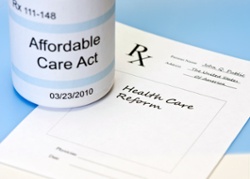By Bill Olson
Chief Marketing Officer at United Benefit Advisors
 As a result of the Patient Protection and Affordable Care Act (ACA) triggering cost increases for fully insured employer-sponsored health insurance plans, more employers are moving to a self-funded model for pharmacy plans, particularly among large employers (1,000+ employees), according to the 2014 United Benefit Advisors (UBA) Health Plan Survey.
As a result of the Patient Protection and Affordable Care Act (ACA) triggering cost increases for fully insured employer-sponsored health insurance plans, more employers are moving to a self-funded model for pharmacy plans, particularly among large employers (1,000+ employees), according to the 2014 United Benefit Advisors (UBA) Health Plan Survey.
UBA’s survey, the nation’s largest benchmarking survey with nearly 10,000 employers responding, shows that self-funded pharmacy plans have increased 29.8 percent (from 8.4 percent) in the last five years and fully insured pharmacy plans have decreased 2.7 percent (from 91.6 percent). Although fully funded pharmacy plans still dominate with 89.1 percent of the market, self-funded pharmacy plans now make up 10.9 percent of all plans, as of 2014.
“Despite the large amount of capital necessary to pay for fluctuating claim costs, self-funding can be more affordable for pharmacy benefits,” says a representative from TrueNorth Companies/MedOne, a UBA Partner Firm.
The survey finds that 66.1 percent of employers with 1,000+ employees have self-funded prescription plans, while nearly all small employer plans (1 to 99 employees) are fully insured. Regional differences do have a major impact, however. For example, 99 percent of California plans are fully insured, with only the state’s largest employers offering self-funded plans. North-central employers, on the other hand, have more self-funded plans, at 17.7 percent.
“North-central employers are more likely to self-fund due to the favorable climate for doing so – less competitive workforce, higher-than-average concern for costs, and a greater amount of manufacturing and agricultural businesses,” says TrueNorth Companies/MedOne.
Read UBA’s full press release for more on these findings as well as the latest trends in stop loss coverage.
